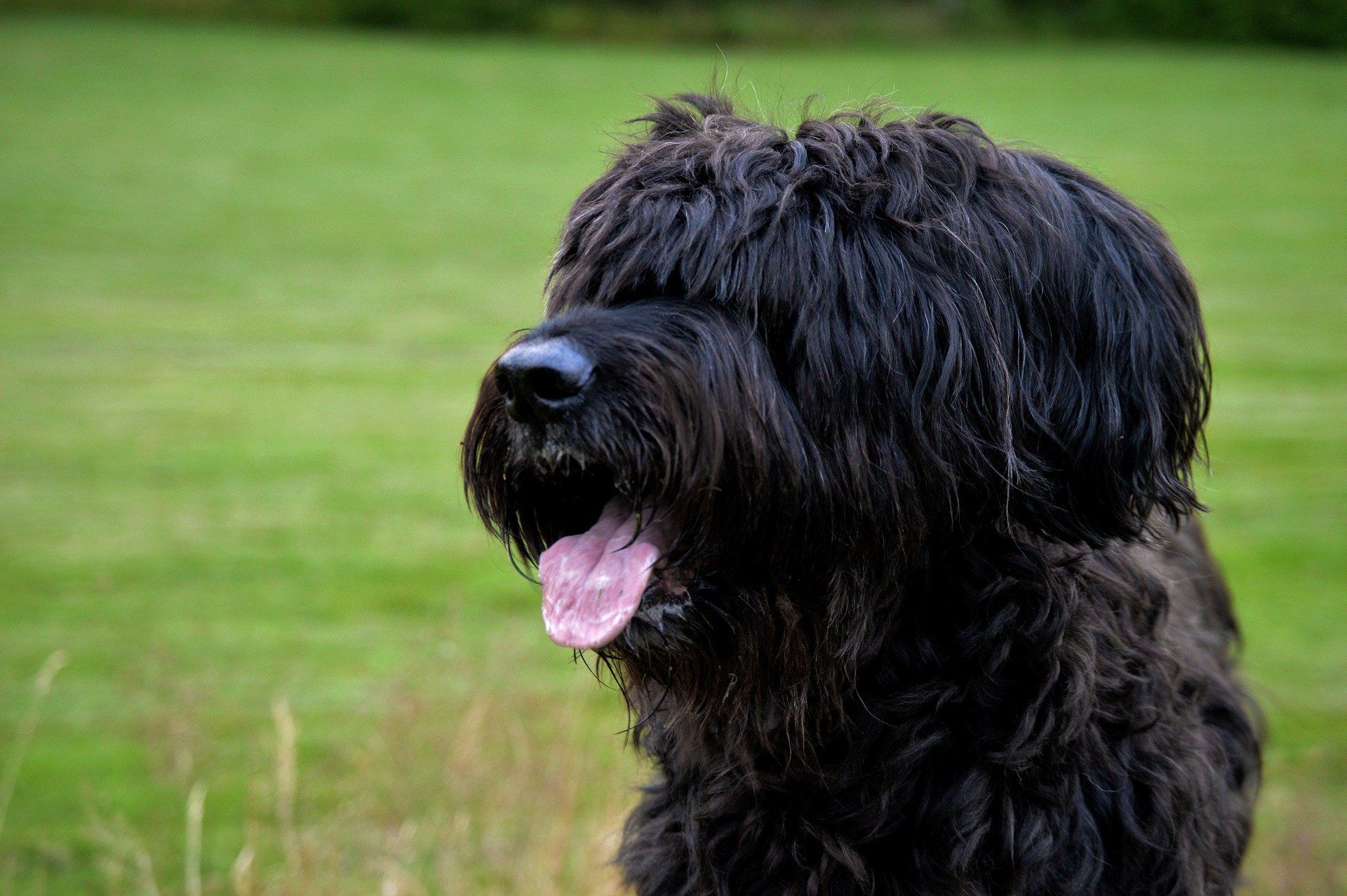Can Briards see?

Table of Contents
Reasons to trim out the fur covering their face
As earlier discussed, the hair around a briard’s eyes (also known as a ‘fall’) can have some hindrances to the dog itself making it trimming it down a great solution. Some of these hindrances include:
Irritation
This fall (fur around the eyes) will sometimes rub against the dog’s eyes irritating the dog. If this is persistent for a long time it may lead to great discomfort to the dog and some hairs might even get into its eyes also adding insult to injury for the dog.
May lead to eye damage
As the irritation builds up for a long time unchecked there may develop eye problems for your dog. These eye problems may be chronic eye problems such as ulcers of the cornea or conjunctivitis
Restricts their field of view.
The field of view to which a typical dog without any hair to obscure its vision can see is about 250% as compared to 160% to a human. For a briard, this is reduced so much by these hairs which limit its field of view as they cannot see through the hair.
Light sensitivity
Due to prolonged coverage of their eyes from the sun, they may develop a photophobic reaction. This light sensitivity leads to the myths that the hairs over their faces protect them from the sun and should therefore not be cut.
This is however not the case as they cause light sensitivity from long periods of non-exposure to direct light on their eyes.
For better interactions with others.
This obstruction in their field of view may lead to behavioral disorders of their normal interactions with other people and animals. As they cannot fully perceive others they may become untrusting and defensive unsure of their surroundings.
By being able to discern well enough their immediate environment they can better gauge the right cause of action to undertake in different instances but if unable to see their environment they may misjudge a situation.
Concerning their fur
Briards have a double coat with an undercoat and an outer coat. The common colors among this breed are black, shades of gray, and shades of tawny whereby pure white is not accepted by the AKC. The undercoat is fine and tight around the body.
The outer coat is hard, dry, and coarse(making a dry rasping sound between the fingers). It is long and lies flat around the body forming wavy locks. Its length may reach up to 6 inches tall. For its great length, it requires daily grooming so that the fur may not get entangled and become matted.
How far can they see and their field of view.
Dogs have a 20/75 vision as compared to us. This means that if you can see something and be able to tell it apart, such as a poll from 75 feet away your dog will be able to recognize the same pattern from 20 feet away. This is their visual acuity which means humans can discern a pattern from a further distance than dogs.
Dogs on the other hand have a better field of vision than us, humans, as theirs spans 250 degrees as compared to 190 degrees for humans. This 60 degree more peripheral vision is due to their eyes’ location to the side of the head.
They are also great at motion detection. They can easily notice the slightest change in motion of an object or body. This is because of the large number of rods in the retina of their eyes which helps in registering a change in motion and they are said to be up to 20 times better than humans.
How do they see
In briards, as in many other dogs, their vision is made possible through photoreceptors which include: cones that detect color which they can see at high light levels, and rods that aid in visuals at low light levels.
As there are a larger number of rods in dogs they can detect motion better and can also see well in the dark, that is have greater night vision.
When it comes to color vision the briard like other dogs have dichromacy in that it can distinguish color in the range of blue and yellow. This is because there are two sets of cones receptors that can perceive only the range between those two colors. Humans are trichromatic and can see through the RGB (Red, Green, Blue) colors which give us the colors that we can see.
